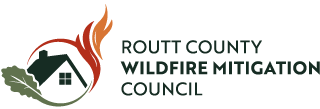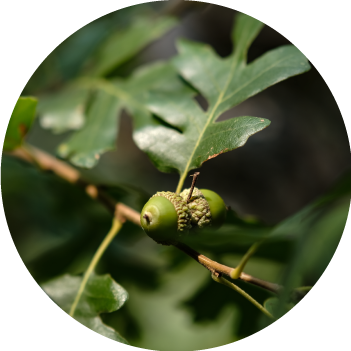Community Wildfire Protection Plan
On September 28, 2023 a new CWPP was signed and published. This was the result of more than a year-long process which included a steering committee made up of both stakeholders and citizens, a series of public meetings held throughout the County and a digital survey to solicit community input, and a focused task force formed to insure that a finished product was available for reference in advance of two key grant cycles.
Routt County and RCWMC hosted a series of public meetings the week of November 14, 2022 to solicit feedback from the communities which will be used in the development of the CWPP. This footage is from the CWPP Public Meeting on November 17, 2022 in Steamboat Springs.

What is a CWPP?
A Community Wildfire Protection Plan (CWPP) is a plan developed by local communities to guide long-term mitigation strategies across a defined area. A CWPP is not just a listing of fuel reduction projects. Instead, the CWPP gives us an assessment of our current landscape conditions and identifies and prioritizes our next steps.
A well-developed CWPP should include input from local governments and municipalities, fire protection districts, local utilities, State and Federal land managers, and local community members and organizations. To ensure this project is successful, Routt County pulled together a Steering Committee with representatives from many of these stakeholder groups to advise this project and ensure it meets the needs of our community.
This CWPP will guide the future of Routt County’s wildfire preparedness and identify strategies for wildfire resilience and mitigation across our community. The CWPP will be adopted into the Routt County Hazard Mitigation Plan and will be subject to annual reviews and revision every five years.
Background
Routt County, in coordination with local, state, and federal agencies, led the development of a countywide CWPP that was completed in 2010. Several smaller scale CWPPs have also been developed by neighborhoods and homeowners associations in the county. However, since the completion of the last countywide CWPP, the area has continued to experience significant growth and development at the same time that the impacts of climate change, ongoing drought, and bark beetle infestations have continued to worsen the wildfire hazard. Increased development in the wildland urban interface (WUI) means greater wildfire risk and more suppression needs. Across the state, we have seen the effects of wildland fire on communities become greater and more frequent.
In recognition of the need to improve the coordination of activities to reduce wildfire risk in the county, local stakeholders formed the Routt County Wildfire Mitigation Council in 2019. The mission of the Council is to create resilient, fire-adapted communities to minimize the potential impacts of wildfire through partnerships and coordination, education and outreach, and programs that assist with long-term risk reduction. One of the strategic objectives for 2020-2023 identified by the Council is to help coordinate the update of a countywide CWPP.
Project Objectives
The purpose of this project was to engage communities in Routt County in developing a CWPP to guide wildfire preparedness and long-term mitigation activities.
The primary objectives for the plan as developed by the Routt County Wildfire Mitigation Council were as follows:
1. Provide a local ground-truth assessment of values at risk, key vulnerabilities, and a wildland-urban interface map for Routt County.
2. Create an actionable and user-friendly wildfire mitigation and community resilience plan that prioritizes those communities determined to be at the most risk of wildfires.
3. Promote inclusive, countywide participation, including government agencies and private property communities, that results in a plan that reflects local and County needs and priorities.
4. Develop prioritized recommendations for specific and feasible actions, to include the following types:
- Forest management and ecosystem (e.g. watershed) protection and restoration
- Fuels treatment projects
- Other community resilience measures to improve public safety, to include but not limited to updated building and planning codes, multiple access and evacuation routes, and wildfire mitigation policies and standards.
- Education and outreach activities
- Critical infrastructure protection
- Strategic plans and partnerships
5. Identify a strategy for implementing recommendations that includes key considerations, roles and responsibilities, and potential funding and technical assistance opportunities.
6. Improve public awareness of wildfire risk, knowledge of effective risk reduction measures, and willingness to take and to support mitigation actions.
The Routt County Office of Emergency Management coordinated the overall project by assigning a project manager to work as the primary contact with the selected consultant team. The Routt County Wildfire Mitigation Council, along with a steering committee, provided guidance on the plan’s development throughout the project.

